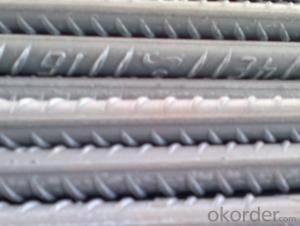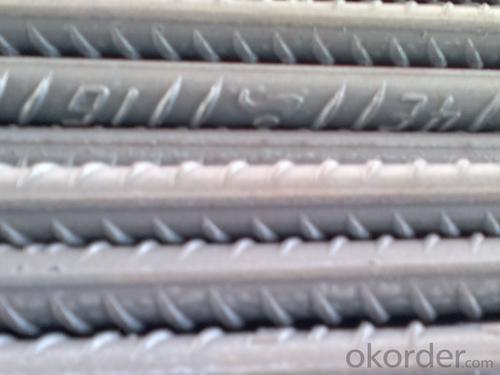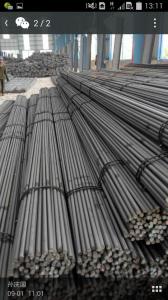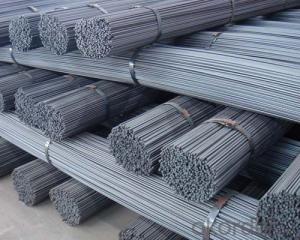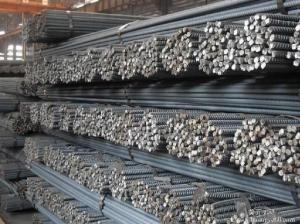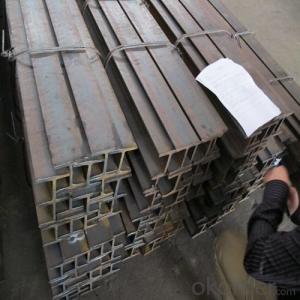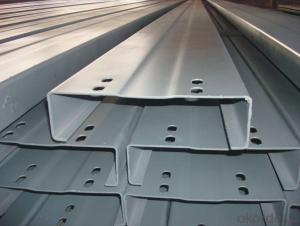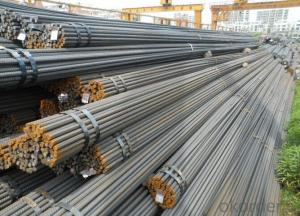Hot Rolled Steel Deformed Bar D-BAR HRB400/HRB500/B500B/B500C/GR40/R60
- Loading Port:
- Tianjin
- Payment Terms:
- TT OR LC
- Min Order Qty:
- 25 m.t.
- Supply Capability:
- 50000 m.t./month
OKorder Service Pledge
OKorder Financial Service
You Might Also Like
Specification
Product Description:
OKorder is offering Hot Rolled Steel Deformed Bar D-BAR HRB400/HRB500/B500B/B500C/GR40/R60 at great prices with worldwide shipping. Our supplier is a world-class manufacturer of steel, with our products utilized the world over. OKorder annually supplies products to European, North American and Asian markets. We provide quotations within 24 hours of receiving an inquiry and guarantee competitive prices.
Product Applications:
Hot Rolled Steel Deformed Bar D-BAR HRB400/HRB500/B500B/B500C/GR40/R60 are ideal for structural applications and are widely used in the construction of buildings and bridges, and the manufacturing, petrochemical, and transportation industries.
Product Advantages:
OKorder's Hot Rolled Steel Deformed Bar D-BAR HRB400/HRB500/B500B/B500C/GR40/R60 are durable, strong, and resist corrosion.
Main Product Features:
· Premium quality
· Prompt delivery & seaworthy packing (30 days after receiving deposit)
· Corrosion resistance
· Can be recycled and reused
· Mill test certification
· Professional Service
· Competitive pricing
Product Specifications:
deformed steel bar grade 40
material: HRB400, BS4449 GR460B
size: 8-36mmx12m.
short delivery time with bulk or container
packing: Mill standard export packing in bundles/coil, around 2tons/bundle.
country of Origin: China
delivery Time: Within a 35 days
Shipment: by bulk vessel or by container
Standard | GB | HRB400 | |
Diameter | 6mm,8mm,10mm,12mm,14mm,16mm,18mm,20mm, 22mm,25mm,28mm,32mm,36mm,40mm,50mm | ||
Length | 6M, 9M,12M or as required | ||
Place of origin | Hebei, China mainland | ||
Advantages | exact size, regular package, chemical and mechanical properties are stable. | ||
Type | Hot rolled deformed steel bar | ||
Brand name | DRAGON | ||
Usage and Applications of HRB400 Deformed Steel Bar:
Deformed bar is widely used in buildings, bridges, roads and other engineering construction. Big to highways, railways, bridges, culverts, tunnels, public facilities such as flood control, dam, small to housing construction, beam, column, wall and the foundation of the plate, deformed bar is an integral structure material. With the development of world economy and the vigorous development of infrastructure construction, real estate, the demand for deformed bar will be larger and larger..
Packaging & Delivery of HRB400 Deformed Steel Bar:
Packaging Detail: products are packed in bundle and then shipped by container or bulk vessel, deformed bar is usually naked strapping delivery, when storing, please pay attention to moisture proof. The performance of rust will produce adverse effect.
Each bundle weight: 2-3MT, or as required
Payment term: TT or L/C
Delivery Detail: within 45 days after received advanced payment or LC.
Label: to be specified by customer, generally, each bundle has 1-2 labels
Trade terms: FOB, CFR, CIF
FAQ:
Q1: Why buy Materials & Equipment from OKorder.com?
A1: All products offered byOKorder.com are carefully selected from China's most reliable manufacturing enterprises. Through its ISO certifications, OKorder.com adheres to the highest standards and a commitment to supply chain safety and customer satisfaction.
Q2: How do we guarantee the quality of our products?
A2: We have established an advanced quality management system which conducts strict quality tests at every step, from raw materials to the final product. At the same time, we provide extensive follow-up service assurances as required.
Q3: How soon can we receive the product after purchase?
A3: Within three days of placing an order, we will begin production. The specific shipping date is dependent upon international and government factors, but is typically 7 to 10 workdays.
Q4: What makes stainless steel stainless?
A4: Stainless steel must contain at least 10.5 % chromium. It is this element that reacts with the oxygen in the air to form a complex chrome-oxide surface layer that is invisible but strong enough to prevent further oxygen from "staining" (rusting) the surface. Higher levels of chromium and the addition of other alloying elements such as nickel and molybdenum enhance this surface layer and improve the corrosion resistance of the stainless material.
Q5: Can stainless steel rust?
A5: Stainless does not "rust" as you think of regular steel rusting with a red oxide on the surface that flakes off. If you see red rust it is probably due to some iron particles that have contaminated the surface of the stainless steel and it is these iron particles that are rusting. Look at the source of the rusting and see if you can remove it from the surface.
Images:
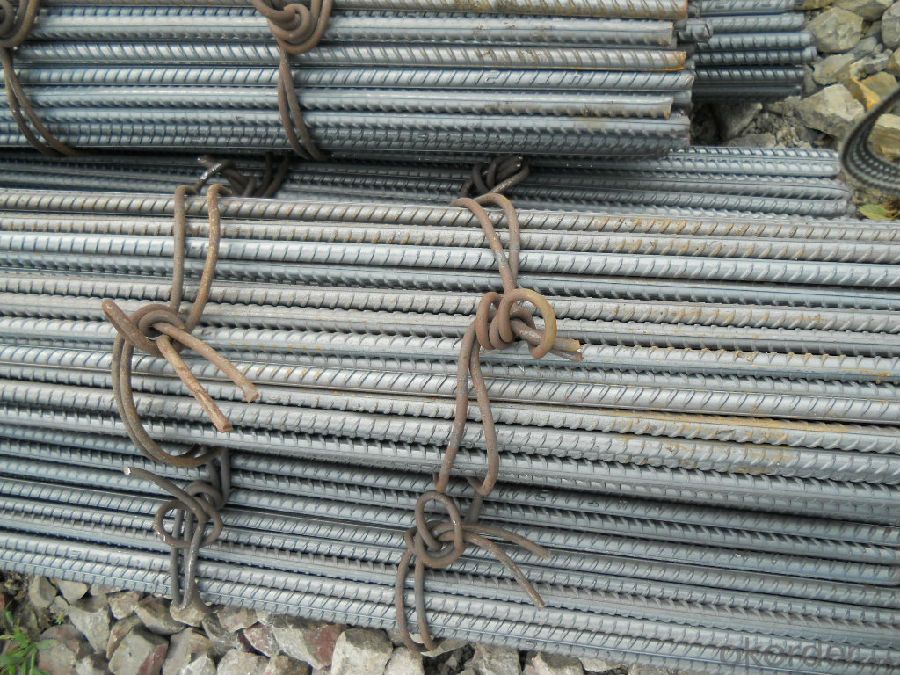
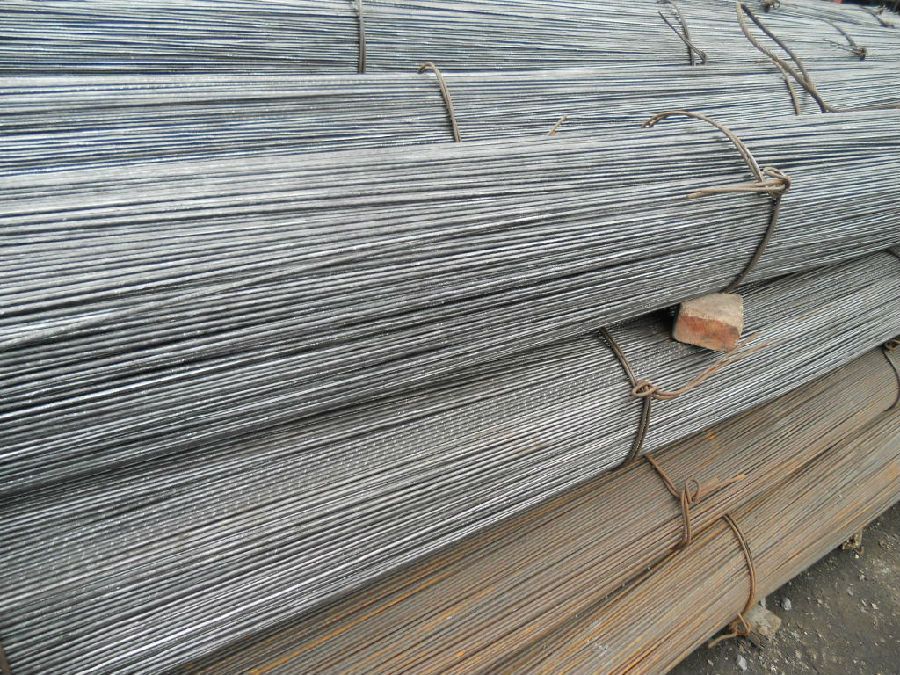
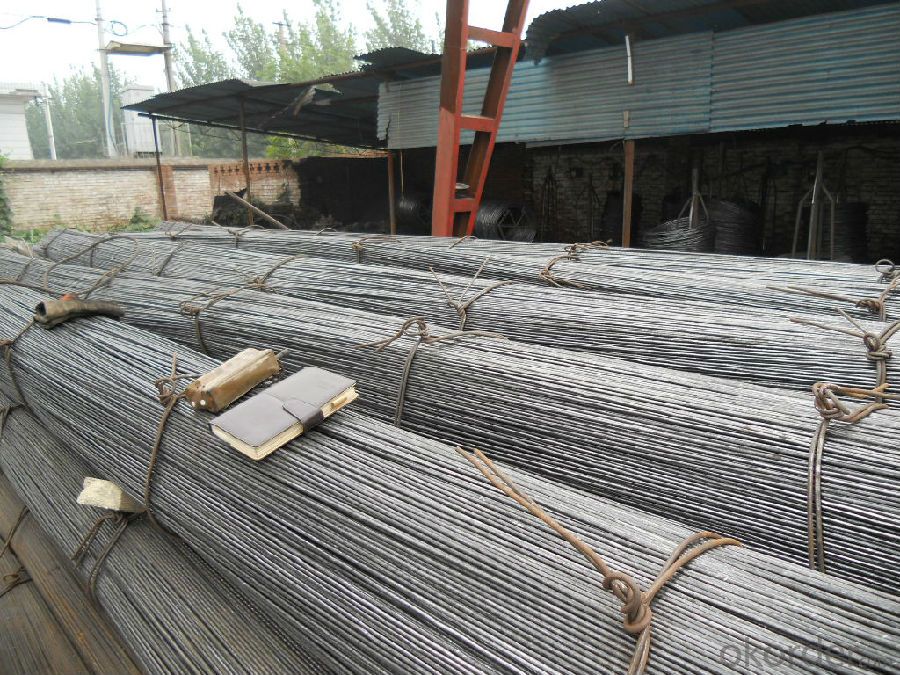
- Q: How are steel rebars used in elevator shafts?
- Steel rebars are used in elevator shafts to reinforce the concrete walls and floors, providing structural strength and stability to the shaft. They help prevent cracks, withstand the weight of the elevator and its passengers, and ensure the overall safety and durability of the elevator system.
- Q: What are the guidelines for the proper anchoring of steel rebars in slabs?
- The proper anchoring of steel rebars in slabs is crucial to ensure the structural integrity and strength of the concrete slab. Here are some guidelines to follow: 1. Embedment depth: The rebars should be embedded in the concrete slab to a specific depth. The depth is typically determined based on the size and strength of the rebars and the load requirements of the slab. It is important to follow the recommended embedment depth to ensure adequate transfer of forces between the rebar and the concrete. 2. Spacing: The rebars should be spaced at regular intervals within the slab to provide uniform reinforcement. The spacing is determined based on the design requirements and the expected load on the slab. Following the recommended spacing guidelines will help distribute the load evenly and prevent cracking or failure of the slab. 3. Lap length: When multiple rebars need to be joined together, a lap splice is used. The lap length is the minimum length of overlap required to ensure proper transfer of forces between the rebars. It is important to follow the specified lap length to maintain the integrity of the reinforcement. 4. Edge distance: The rebars should be placed at a certain distance from the edges of the slab to prevent edge failure. The edge distance is determined based on factors such as the bar size, concrete cover, and design requirements. Maintaining the specified edge distance will help ensure the rebars are adequately anchored and prevent concrete spalling or cracking near the edges. 5. Concrete cover: The rebars should have a minimum concrete cover to protect them from corrosion and provide fire resistance. The concrete cover is the distance between the outer surface of the rebar and the nearest concrete surface. Following the recommended concrete cover guidelines will help maintain the durability and longevity of the steel rebars. 6. Proper placement and alignment: The rebars should be accurately placed and aligned within the slab to provide effective reinforcement. They should be positioned at the correct depth, spacing, and alignment as per the design specifications. Proper placement and alignment will ensure the rebars are securely anchored and contribute to the overall strength of the slab. It is important to note that these guidelines may vary depending on the specific project requirements, local building codes, and design standards. Therefore, it is recommended to consult with a qualified structural engineer or follow the guidelines provided by relevant authorities to ensure the proper anchoring of steel rebars in slabs.
- Q: How are steel rebars anchored in concrete foundations?
- Steel rebars are anchored in concrete foundations through a process called rebar anchoring. This involves placing the rebars at predetermined positions within the concrete formwork and then pouring the concrete mixture over them. The concrete then hardens, creating a strong bond with the rebars, effectively anchoring them in place.
- Q: How do steel rebars contribute to the stability of a structure?
- Steel rebars contribute to the stability of a structure by providing reinforcement to the concrete. They enhance the structural strength and integrity of the building, by increasing its resistance to tension, compression, and bending forces. The rebars prevent cracks and failure in the concrete under heavy loads, improving the overall durability and safety of the structure.
- Q: Can steel rebars be used in industrial construction projects?
- Yes, steel rebars can be commonly used in industrial construction projects. They provide structural reinforcement to concrete structures, enhancing their strength and durability. Rebars are widely used in various industrial applications such as bridges, factories, power plants, and high-rise buildings to ensure the structural integrity and safety of these projects.
- Q: How are steel rebars transported and stored on construction sites?
- Steel rebars are typically transported to construction sites using trucks or trailers. These vehicles are designed to safely carry and unload the heavy and bulky rebars. Upon arrival at the site, the rebars are usually offloaded using cranes or forklifts. To ensure efficient storage and easy access, rebars are often stored in designated areas called rebar yards. These yards are typically organized in a way that allows for easy identification and retrieval of rebars when needed. The rebars are sorted and stacked according to their size, length, and type to prevent any confusion during construction. In the rebar yard, rebars are commonly stored horizontally on steel or wooden racks. The racks are designed to provide proper support and prevent damage to the rebars. It is important to note that rebars should be stored above ground level to protect them from moisture, rust, and contamination. They should also be kept away from any damp areas or direct contact with soil. To maintain the quality of the rebars, it is crucial to protect them from exposure to rain, snow, and excessive sunlight. Therefore, construction sites often use protective covers, such as tarps or plastic sheets, to shield the rebars and prevent any corrosion or deterioration. Additionally, construction workers must handle rebars with care to avoid any bending or deformation. Special attention should be given to prevent rebars from being dropped or dragged, as it can compromise their structural integrity. Overall, the transportation and storage of steel rebars on construction sites require careful planning and adherence to safety guidelines to ensure their quality and effectiveness in reinforcing concrete structures.
- Q: How are steel rebars tested for quality and strength?
- Steel rebars are tested for quality and strength through a series of standardized tests. These tests ensure that the rebars meet the required standards and can withstand the expected loads and stresses. One common test is the Tensile Test, which measures the maximum amount of stress a rebar can withstand before it breaks. In this test, a sample rebar is pulled until it fractures, and the force required to break it is measured. This test provides valuable information about the rebar's ultimate tensile strength, yield strength, and elongation. Another important test is the Bend Test, which evaluates the rebar's ductility and ability to withstand bending without breaking. In this test, a sample rebar is bent to a specific angle, and any cracks or fractures are closely examined. The rebar is deemed acceptable if it doesn't show any signs of failure. Additionally, Chemical Analysis is performed to determine the chemical composition of the rebar. This test ensures that the steel meets the required chemical composition standards, as different compositions can affect the rebar's strength and durability. Furthermore, the Dimensional Test checks the dimensions, weight, and shape of the rebar to ensure they comply with the specified standards. Any deviations from the required measurements can compromise the rebar's structural integrity. Moreover, the rebar's Surface Condition is examined visually to assess any signs of rust, cracks, or other defects that may affect its performance. Proper surface condition is crucial as it ensures good bonding with the surrounding concrete. Finally, some rebars undergo Non-Destructive Testing such as ultrasonic testing or magnetic particle inspection to detect any hidden defects or cracks that may not be visible to the naked eye. Overall, these testing methods are employed to ensure that steel rebars have the required quality and strength to be used in construction projects, providing the necessary reinforcement for reinforced concrete structures.
- Q: How are steel rebars stored on construction sites?
- Steel rebars are typically stored on construction sites in a horizontal position, often on racks or pallets, to prevent bending or deformities. They are organized based on size, type, and length to facilitate easy access and efficient usage during the construction process. Additionally, rebars may be protected from corrosion by being covered with a tarp or stored in a designated area to prevent exposure to moisture and other elements.
- Q: Can steel rebars be used in structures with limited construction materials?
- Yes, steel rebars can be used in structures with limited construction materials. Steel rebars are commonly used as reinforcement in concrete structures to provide strength and stability. They can be easily transported and installed, making them suitable for construction projects in areas with limited access to construction materials. Additionally, steel rebars have high tensile strength, which enhances the durability and load-bearing capacity of structures, making them a reliable choice in resource-constrained environments.
- Q: What is the minimum yield strength of steel rebars?
- The minimum yield strength of steel rebars typically varies depending on the type and grade of steel being used. However, in general, the minimum yield strength of steel rebars is commonly around 400 megapascals (MPa) or 58,000 pounds per square inch (psi).
Send your message to us
Hot Rolled Steel Deformed Bar D-BAR HRB400/HRB500/B500B/B500C/GR40/R60
- Loading Port:
- Tianjin
- Payment Terms:
- TT OR LC
- Min Order Qty:
- 25 m.t.
- Supply Capability:
- 50000 m.t./month
OKorder Service Pledge
OKorder Financial Service
Similar products
Hot products
Hot Searches
Related keywords
